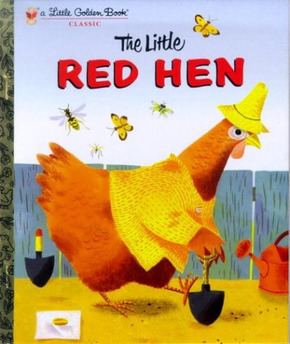Originally published 1 October 1942 Genre Children's literature Followed by Nursery Songs | Preceded by Prayers for Children | |
 | ||
Similar Margot Zemach books, Little Golden books, Children's literature | ||
The Little Red Hen is an old folk tale, most likely of Russian origin. The best-known version in the United States is that popularized by Little Golden Books, a series of children's books published for the mass market since the 1940s. The story is applied in teaching children the virtues of work ethic and personal initiative.
Contents
Role in reading instruction
During the 1880s, reading instruction in the United States continued to evolve to include primers that became known as literature readers. Prior to this time highly moralistic and religious texts were used to teach reading. The Little Red Hen offers a moralistic tale of the importance of hard work and the shame as well as consequences of laziness. During this time, consideration of the interest of the young reader became more central to the teaching of reading. In considering the young reader, the authors of this genre made their texts appealing visually both through illustrations and text formatting. "Margaret Free and Harriette Taylor Treadwell were the first authors to prepare beginning readers with a content consisting wholly of adaptations from the old folktales." (Smith, 1965/2002, p. 141). The genre of the folktale lent itself to repetitive vocabulary – an early reading strategy still in use today.
Plot summary
In the tale, the little red hen finds a grain of wheat and asks for help from the other farmyard animals (most adaptations feature three animals, a pig, a cat, and a rat, duck, goose, dog, or goat ) to plant it, but none of them volunteer.
At each later stage (harvest, threshing, milling the wheat into flour, and baking the flour into bread), the hen again asks for help from the other animals, but again she gets no assistance.
Finally, the hen has completed her task and asks who will help her eat the bread. This time, all the previous non-participants eagerly volunteer. She declines their help stating that no one aided her in the preparation work. Thus, the hen eats it with her chicks leaving none for anyone else.
The moral of this story is that those who say no to contribution to a product do not deserve to enjoy the product: "if any would not work, neither should he eat."
